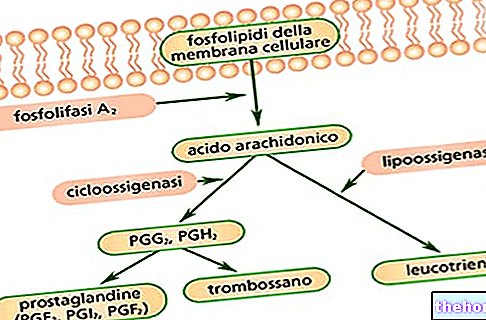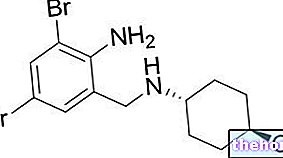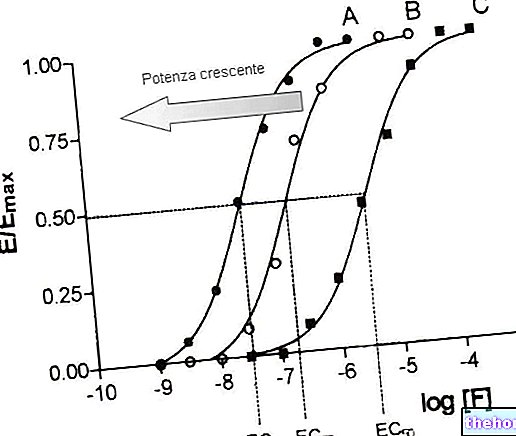CLARITYN ® is a Loratadine-based drug
THERAPEUTIC GROUP: Antihistamine - H1 antagonist

Indications CLARITYN ® - Loratadine
CLARITYN ® is indicated in the treatment of IgE mediated allergic pathologies such as allergic rhinitis to chronic idiopathic urticaria.
CLARITYN ® mechanism of action - Loratadine
CLARITYN ® is a medicinal product based on Loratadine, a second generation competitive inhibitor of H1 receptors, and therefore with better pharmacokinetic and pharmacodynamic characteristics than its predecessors, and more precisely from:
- poor permeability in the central nervous system, with consequent reduction of potential central side effects, primarily sedation;
- greater selectivity towards H1 receptors with less atropine-like effects.
Taken orally it reaches plasma peak in the following 2-3 hours with therapeutic effects that persist for an average of 4-6 hours at the end of which, after an intense hepatic metabolism supported by cytochromial enzymes, they are eliminated by the urinary route.
Well distributed among the various tissues, Loratadine can reduce bronchospasms, improving the respiratory capacity of allergic patients, inhibit the edema action of histamine at the level of skin capillaries by controlling the classic dermatological symptoms present in chronic idiopathic urticaria, control the stimulus itchy and stretch the intestinal smooth muscle.
Studies carried out and clinical efficacy
LORATADINE AND MOTOR FUNCTION
Clin Neurophysiol. 2012 Apr; 123: 780-6.
Low dosage promethazine and loratadine negatively affect neuromotor function.
Kavanagh JJ, Grant GD, Anoopkumar-Dukie S.
A study that, considering the widespread use of antihistamines, evaluates the potential side effects of the same and in particular of Loratadine in motor control and in the correct execution of voluntary movements.
THE CARDIOVASCULAR SAFETY OF LORATADINE
Lin Chung Er Bi Yan Hou Tou Jing Wai Ke Za Zhi. 2008 Dec; 22: 1076-8.
Observation on cardiovascular safety of loratadine in treatment of persistent allergic rhinitis.
Liu Y, Cheng L.
Study that evaluates the cardiovascular safety of Loratadine used for a long time for the treatment of allergic rhinitis, confirming its safety when used at recommended dosages.
LORATADINE FOR TOPICAL USE
Drug Dev Ind Pharm. 2009 Aug; 35: 897-903. doi: 10.1080 / 03639040802680289.
Development of the loratadine gel for enhanced transdermal delivery.
Song JH, Shin SC.
Very interesting pharmaceutical study that characterizes new formulations for Loratadine and in particular that in gel for topical use, able to optimize the penetration of the drug at the local level, thus being able to limit the potential systemic side effects.
Method of use and dosage
CLARITYN ®
Loratadine 10 mg tablets;
Loratadine 10 mg effervescent tablets;
Syrup of 5 mg of Loratadine per 5 ml of product.
The dosages and timing of taking CLARITYN ® must be defined by the doctor on the basis of the physiopathological characteristics of the patient, his age and above all the severity of the clinical picture present.
Generally in adults, the assumption of 10 mg per day of Loratadine is able to guarantee a prompt remission of the complained symptoms.
Dosage adjustments should be envisaged in patients with severe hepatic impairment.
CLARITYN ® warnings - Loratadine
The use of CLARITYN ® must necessarily be preceded by an appropriate medical consultation, useful to verify the prescribing appropriateness and the possible presence of contraindications to the use of the drug.
Maximum care should be reserved for patients with severe liver disease given the significant impairment of metabolic capacity.
CLARITYN ® in tablets contains lactose, therefore its use is contraindicated in patients with lactase enzyme deficiency, glucose-galactose malabsorption syndrome, and galactose intolerance.
In order to obtain adequate results, it is recommended to stop taking antihistamines at least 48 hours before allergy tests.
Keep this medicine out of the reach of children.
PREGNANCY AND BREASTFEEDING
The use of CLARITYN ®, in the light of current evidence, should be contraindicated during breastfeeding, given the ability of Loratadine to cross the breast filter, and limited to cases of real need during pregnancy.
In the latter cases, the supervision of your gynecologist would clearly be necessary.
Interactions
The hepatic metabolism to which Loratadine is subjected significantly increases the risk of drug interactions with active principles capable of modulating the activity of cytochromial enzymes.
These interactions could alter the pharmacokinetic characteristics of Loratadine, sometimes making its intake even dangerous.
Similarly, Loratadine induces the activity of hepatic microsomal enzymes, accelerating the catabolism of numerous active ingredients.
Contraindications CLARITYN ® - Loratadine
The use of CLARITYN ® is contraindicated in case of hypersensitivity to the active substance or to one of its excipients or to other structurally related molecules.
Undesirable Effects - Side Effects
Although Loratadine does not cross the blood-brain barrier acting at the nervous level, the use of CLARITYN ® could cause the onset of dizziness, headache, tachycardia, nausea, dry mouth, impaired liver function and adverse reactions due to hypersensitivity to the active ingredient.
Note
CLARITYN ® is a prescription drug.
The information on CLARITYN ® - Loratadine published on this page may be out of date or incomplete. For a correct use of this information, see the Disclaimer and useful information page.


.jpg)

























